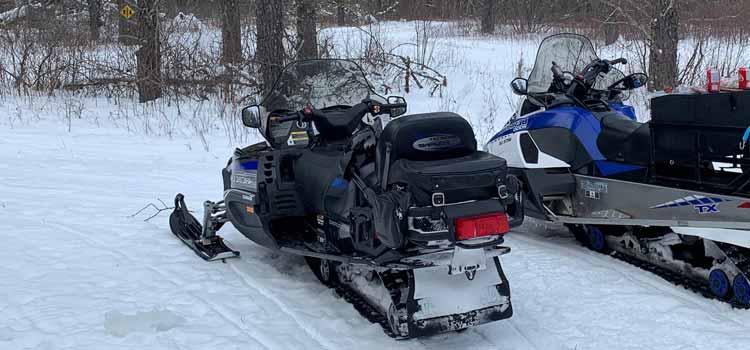
You let up on the throttle and your snowmobile dies. It’s one of the most frustrating feelings, and getting to the bottom of why your machine won’t idle is an important part of keeping a snowmobile running smoothly. Let’s look at some of the more common reasons a snowmobile won’t idle, and discuss how to fix them.
Your snowmobile is not going to idle if it has:
- Poor quality gas.
- Clogged up fuel system.
- Damaged rubber boots on the carburetor
- Plugged air box/filter
- Misadjusted or clogged up carburetor.
- Damaged throttle safety switch.
Fixing any of these problems is relatively easy and can be done on your own at home.
Poor Quality Gas
The first and easiest thing to check is the fuel system of your snowmobile. this includes fuel in the tank, fuel lines, fuel pump, and the fuel filter. Let’s start with the quality of gas first, and then make sure it’s flowing properly through the fuel system.
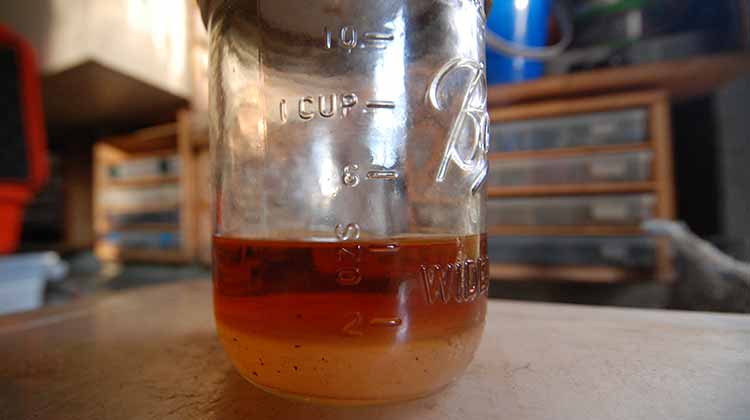
Old gasoline is one of the most common reasons a snowmobile won’t idle. Old gas can be filled with impurities, burns slow, and can form gum-like residuals in the fuel system. This is a common problem with snowmobiles in particular because they are only used a few months out of the year, and spend the rest of the time parked, with fuel sitting still and not being used. Even worse, modern day fuel is not designed to hold up well over long periods of time. Most gas available these days contains 10% ethanol, and this can create massive problems in small engines. Ethanol doesn’t store well, breaks down, and causes damage to engine and fuel system components. It also can attract water vapor from the atmosphere and introduce it to the fuel system.
Gasoline is a refined blend of hundreds of different compounds, formulated for specific seasons. Stored over the long term, this blend begins to break down, loses its quality, and can have a lot of impurities. So, poor quality gas is one of the first things to check when your snowmobile won’t idle. Other symptoms like hard starting, rough idling, stalling, reduced fuel economy, and higher emissions also indicate the poor quality of the gas
Fix: Remove the old fuel and replace with high quality gasoline.
You’ll need to remove the old gas from the tank and replace it with fresh, high quality gas. In some cases, you can pull the tank out, elevate it and drain the gas from the outlet. The advantage here is that you can wash the tank out with water and a mild detergent, cleaning all of the old fuel deposits from it, completely dry it out and reinstall.
If removing the fuel tank requires a complicated process (depends on the machine), you can instead pump the fuel out using a siphon or manual fuel pump. Although it’s ideal to get all of the fuel out, leaving a little in the tank and the lines is probably okay: after running clean fuel through the system most of the old fuel will be diluted out and burned/expelled.
Refill your gas tank with fresh, high quality gas from a reliable source. Choose a high octane gas (most machines require at least 87 octane) and preferrably one without any ethanol. Check your manufacturer’s recommendations for further details.
Because of the problems ethanol-based gasoline causes on small engines, gas stations in most areas now offer ethanol-free gas for consumers to purchase. Ethanol-free gas is much more expensive (in my area it’s usually at least $1 per gallon extra) but when you factor in the problems you avoid by using the higher quality fuel, it almost always pays for itself in reduced downtime and maintenance/performance issues.
If you don’t have access to ethanol-free gas at any of your local stations, you can try any local small airport. They usually sell AVgas, which works great on small engines and does not contain ethanol. Another option is to purchase one of the many fuel additives that are available to help prevent ethanol gas related problems.
It is always a good idea to remove the gasoline from your snowmobile when you are going to store it for the summer, or at the very least, to add a fuel stabilizer to any gas you are going to leave in the tank. This way, the gas does not form any residual and does not clog fuel lines.
Damaged or Clogged up Fuel System
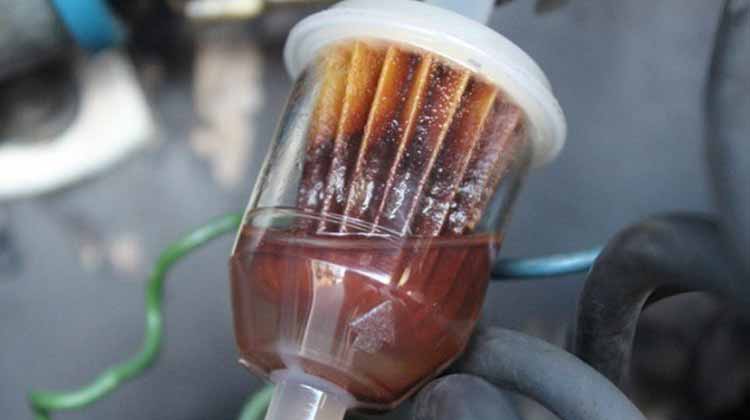
Your snowmobile may have trouble idling because it is not receiving adequate flow of gas through the fuel system. This could include clogged lines or a plugged up filter. The fuel filter is a crucial component of any fuel system. It filters out any impurities, dirt, debris, etc. and prevents the bad stuff from getting to the engine where it can cause severe damage to your machine. If a filter becomes too filled with debris it can restrict the flow of gasoline, particularly at times of low fuel demand when the engine is idling.
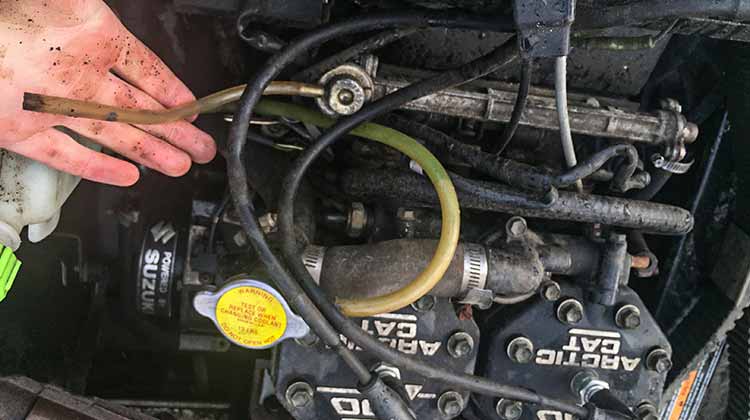
In addition to a plugged filter, plugged fuel lines can prevent a snowmobile from properly idling. Particles of debris that are not caught by the fuel filter can plug up the lines, and they can also get gummed up from fuel residue due to improper storage. Fuel lines are typically rubber or plastic and are prone to cracking as well, which allows excess air to enter the system and makes it more difficult for fuel to travel through the lines and to the carburetor. This can result in a lean mixture of air and fuel and will cause the snowmobile to not idle.
The fuel line from the tank goes to a fuel pump, which is responsible for delivering gasoline to the carburetor. The fuel pump works on a vacuum coming from the engine through a vacuum hose. If this hose is damaged or blocked, or if there is an air leak somewhere in the fuel line, the pump will not push enough fuel into the carburetor. In this case, you may find yourself having to use the choke lever or to pull the throttle open to keep your snowmobile from stalling.
Fix: Clean the fuel system and replace the damaged parts
Replace (or at a minimum, clean) the fuel filter
Check the fuel lines for debris clogs, cracks or poor connections
Replacing the fuel filter (or cleaning one).
Snowmobile fuel filters are simple, cheap and easy to replace. If your fuel filter is made up of paper or nylon, then replace it with a new one. They are cheap and available under $10. These filters typically last around 6-7 months.
If the fuel filter in your snowmobile is made up of metal then you can wash it with lukewarm water and mild detergent. You can also use carburetor cleaner fluid.
I recommend that you replace the metal fuel filter if yours is three or four years old.
Finding cracks in the fuel line
Any cracks or damages in the fuel line that can easily be seen are a clear indicator that the air is leaking into the system. Start from the fuel tank and observe the fuel line.
Any leakage is a sure sign of a damaged line. Small cracks are harder to find. Use a flashlight to closely inspect the line throughout its entire length. Small cracks are often visible only in bright light. Bending or squeezing the fuel line will help you find the cracks more easily. In addition to checking for cracks, make sure the lines are securely connected to all joints, and fittings.
Finding and removing blockage in the fuel line
If fuel lines on your snowmobile do not have any cracks, then you can try blowing hard into the fuel line or by using compressed air to remove any blockage. Many fuel lines are transparent, so you can visually inspect them for debris and blockages, and you can also see if fuel moves through them when pressure is added. In some cases, lines may need to be taken apart to properly test them.
Replacing fuel Lines
Fuel lines are cheap and fairly easy to replace. Oftentimes it’s a good idea to just replace the entire line to ensure all is good. A cutting tool and some pliers, and perhaps a screwdriver, are all that is needed to replace fuel lines.
Fixing the fuel pump
Finding the fuel pump is very easy – just follow the fuel line coming from the tank. You’ll see a small component with three ports: in, out, and vacuum, each with a hose attached.
Pull out the “in” hose (on the fuel pump) that is connected between the fuel tank and fuel pump, and make sure the fuel is coming from the fuel tank.
The fuel pump itself must be sealed, and there should be no leaks. To check the fuel pump and vacuum hose, you can remove the fuel hose that is connected between the fuel pump and the carburetor.
Then crank the engine for about two to three seconds and see if the fuel is coming out of the fuel pump. If the flow of the gasoline is low, then there is a problem with the vacuum hose or the fuel pump itself.
The vacuum hose is connected to the crankcase and the fuel pump. The compression of the engine is used to drive the diaphragm in the fuel pump.
This hose should be airtight, and there should not be any cracks or damages in it. If you can see any cracks or if there is any blockage in the vacuum hose, you can replace it with a new one. Fuel pumps don’t seem to fail very often on snowmobiles, but they are also simple to replace.
Fuel System Recap
If fuel can freely flow from the fuel tank, through the lines, filter and pump to the carburetor, you probably don’t have a fuel flow issue and it’s time to investigate other possibilities.
Damaged Rubber Boots on the Carburetor
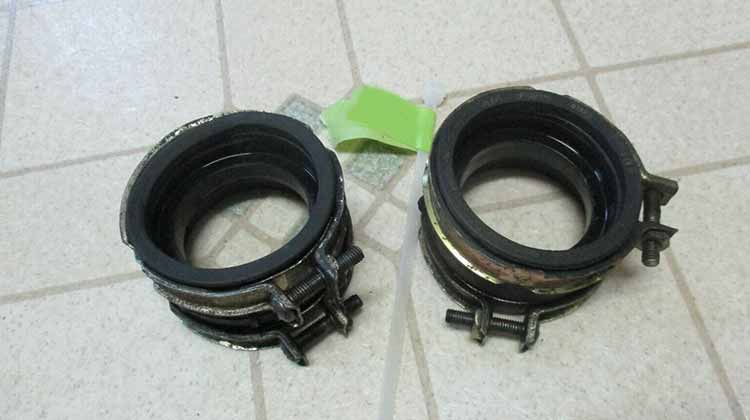
The rubber boots attached to either end of your snowmobile’s carburetor help transport air into the system. All rubber parts have a limited life span, after which they start to degrade and crack. Poor idling is often a result of these boots being cracked and allowing excess air into the system. This is a common problem with older snowmobiles as the rubber components tend to be old and prone to failure. I’ve had this issue numerous times with Yamaha Bravo snowmobiles I’ve owned.
Fix: Replace the rubber boots
Cracked or loose rubber boots on the carb are easily diagnosed and fixed. Be sure to replace failing ones because in addition to preventing proper idling, damaged boots can also cause harm to the engine.
Plugged Air Box/Filter
The air box on a snowmobile is designed to allow the engine to intake filtered air into the carburetor. The box is typically lined with a piece of foam or similar filter material. This is a critical component for snowmobiling, because the box prevents snow from being sucked into the carb and causing a whole host of problems. The issue with air boxes is that they can become clogged and prevent adequate amounts of air from getting into the system, which can prevent idling. Most often this is caused by mice building a nest in the air box.
Fix: Clean the air box and filter
Misadjusted or Clogged up Carburetor

After the fuel system comes to the carburetor, which mixes air and fuel to create the ideal blend required for the engine to work. If your snowmobile’s carburetor is clogged up or dirty, or even poorly adjusted, your snowmobile will not idle. A misadjusted or dirty carburetor can also cause other issues like backfiring, stalling, misfiring and more.
Idle screw and pilot jet

There is a idle screw on the carburetor that controls the flow of gasoline for when your snowmobile is running idle.
Sometimes this screw can get misadjusted if someone has tweaked it a little to increase the throttle. In some rare cases, it could also lose its original position due to vibration.
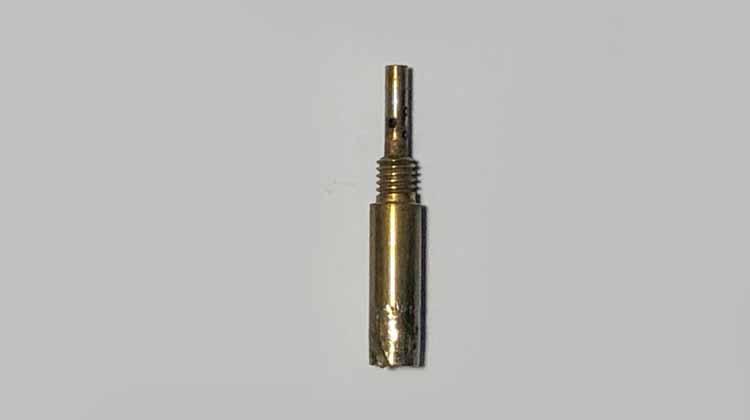
Pilot jets are located inside the carburetor and they squirt the gasoline to be mixed with air. There are tiny holes (or a single hole) that can get clogged up due to old fuel or even a little bit of carbon or dirt, or even from old gasoline.
This would also restrict the flow of gasoline inside the carburetor and cause your snowmobile to die if you let go of the throttle.
Fix: Re-adjust idle screw and clean the pilot jets.
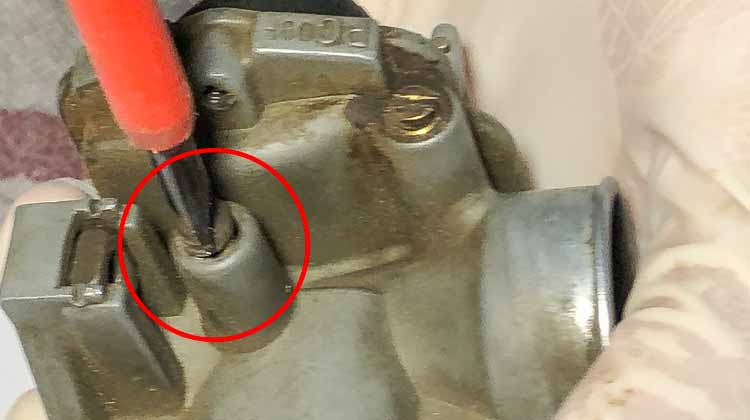
Adjusting the idle screw is very simple, and you only need a screwdriver for it. You will need to re-adjust the idle screw so the engine of your snowmobile is idling at the normal RPM. With the screwdriver, start turning the idle screw to the right (while your snowmobile is running) to see how whether it idles better or dies. If turning the idle screw to the right does not work, try turning it to the left. You can refer to your snowmobile’s service manual to find the correct range of RPM on idle. I would also suggest you mark the screw with a permanent marker, so next time it will be easier to determine whether the adjustment has moved.
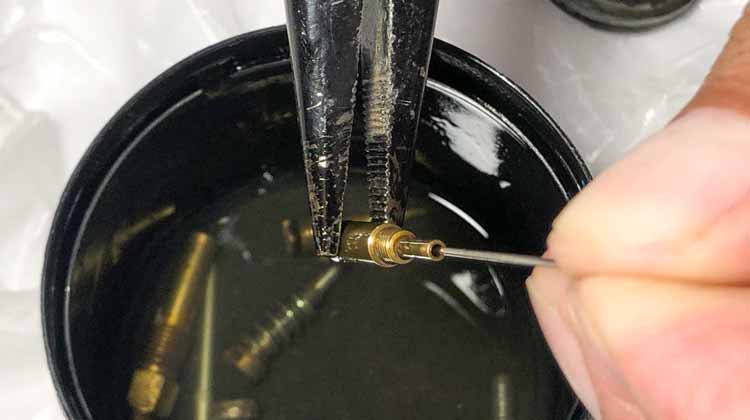
Cleaning the pilot jet is not an easy task, but it can be done if you have enough patience.
You will need a carburetor cleaning kit, a carburetor cleaning fluid, and a few basic tools to disassemble. To reach the pilot jet you will need to disassemble the carburetor.
I have written a detailed blog post about disassembling and cleaning the carburetor in easy to follow steps (with pictures).
This post will help you understand the process and do it yourself in under 1 hour.
Tuning the Carburetor
Making fine tune adjustments to a carburetor is a technical job, and every snowmobile model has its adjustments according to the engine size. Use the repair manual of your snowmobile and look for how to adjust the carburetor of your snowmobile.
If your snowmobile is manufactured by Yamaha, Polaris, or Arctic Cat, then you can also buy and download the repair manual of your model from ‘911manual.com‘. Following a manual is easy, and everything is there in steps.
If you are still not able to adjust your carburetor properly, call a mechanic or visit the nearest repair shop. You can also remove the carburetor and take only that to the shop.
Bad or Malfunctioning TSS (Throttle Safety Switch)
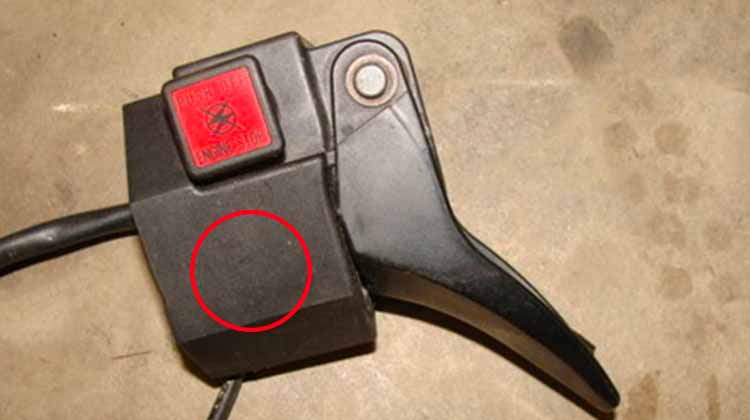
The Throttle Safety Switch (TSS) is a small switch in the throttle block. It is installed with the throttle rod, and it plugs into the magnetic trigger wire of your ignition system. It works completely off the return spring on the carburetor.
When you lift off the throttle, if for some reason it cannot return, the TSS will shut down the engine immediately. This is a safety mechanism to prevent a runaway snowmobile resulting from a stuck throttle cable.
If none of the other fixes worked for you, then there is a remote chance that the TSS has gone bad. To find the connector of the TSS, you can consult the repair manual or the wiring diagram of your snowmobile.
Test this by disconnecting the TSS and starting your snowmobile. If runs and idles fine with the TSS disconnected, you’ve diagnosed the problem. Although the machine can operate indefinitely with the TSS disabled, it’s a good idea to have this important safety feature fixed as soon as possible.
In Conclusion
Diagnosing and fixing a snowmobile that won’t idle properly can be a frustrating task. I hope some of these simple tips will help you figure out the problem. Sometimes these things require patience, tools, a decent workplace and a determined mind, but you’d be surprised what you can fix (and how much money you can save) on your own with the right information. If all else fails, then it’s time to take it to the shop. Good luck!
Thanks snowmobile man great info